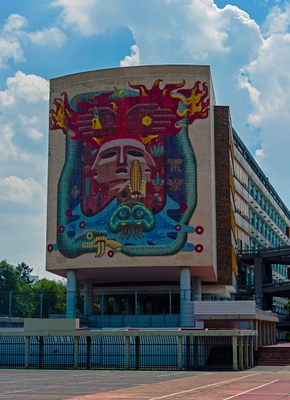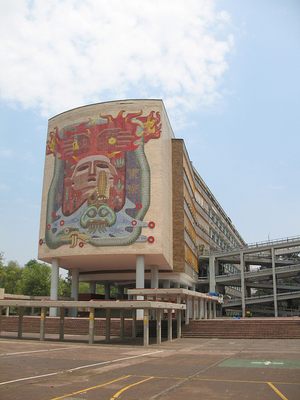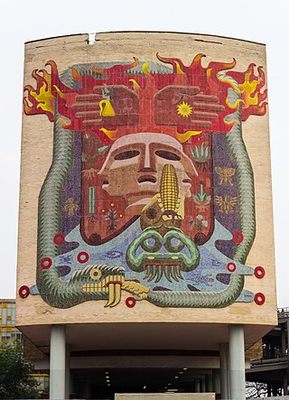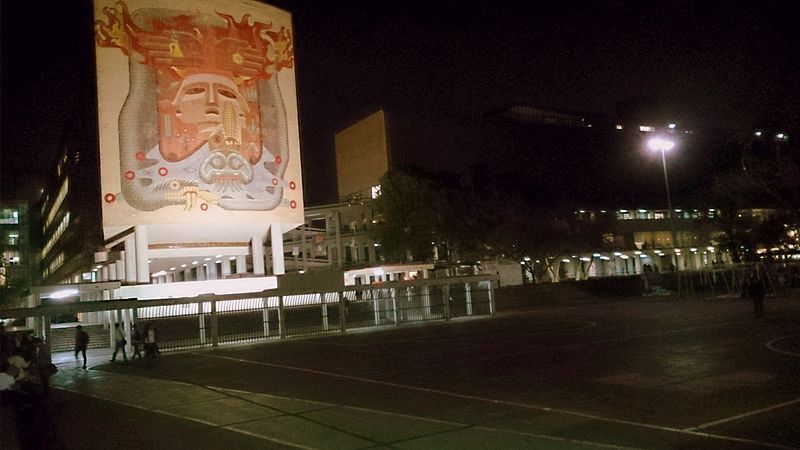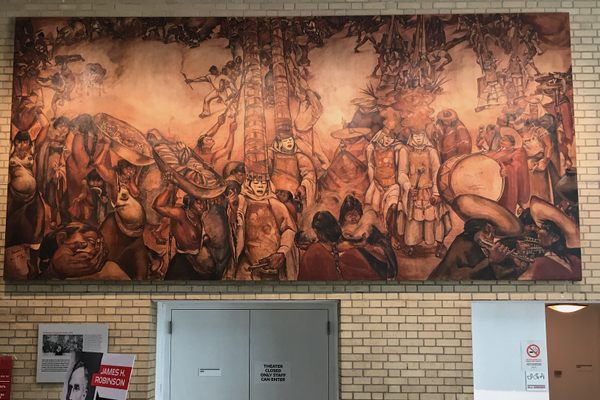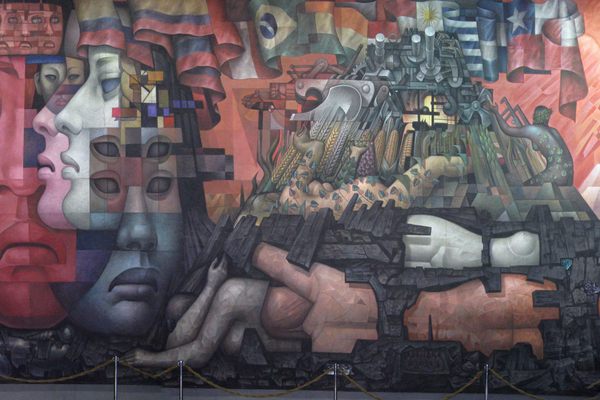About
A highly symbolic mural covers the side of a Faculty of Medicine building at the National Autonomous University of Mexico. The mural is encircled almost protectively by a rattlesnake, its forked tongue flickering between its fangs. The mid section of this gigantic serpent is shown to have burst into flames, from which rise tendrils of smoke.
The snake serves as both a reference to the ancient Greek-derived symbol of medicine, the Caduceus staff, and the ancient Egyptian-Mesopotamian concept of Ouroboros and infinity. But most of all, this enormous snake symbolizes the Earth Mother Goddess of the Aztec civilization, Cōātlīcue.
Cōātlīcue was believed to have given birth to the earth itself, and just like the Earth, this deity possessed a striking duality. The goddess could be both a loving mother, creating and nurturing life, but she was also a devourer and destroyer of human existence through natural disasters. In the context of the mural, she signifies creation and the inception of life, fertility, and fecundity, but also the dangers and risks inherent in being alive and mortal.
Beneath the scaled belly of this sacred snake, you can see three mysterious golden creatures in flight. These are meant to represent winged animals that were revered by the Aztecs: the swallowtail butterfly, the king vulture, and the golden eagle. This aspect of the mural symbolically represents the element of air (yohualli).
The central image of the mural shows a three-faced mask on a red background. This image is in fact meant to represent both the universal human condition and the national emergence of mestizaje in Mexico. This was the racial and ethnic mix of the indigenous Pre-Hispanic people with the Spanish colonizers.
Two gigantic hands float above the mask, one of which carries pollen and the other a seed. This detail represents the element of fire (tetl), which many Pre-Hispanic civilizations believed was a symbol of the unity of opposites and duality. Two humongous hands allude to the role the controlled use of fire plays in agriculture.
Below the central element of fire, you’ll see a skull that appears to be devouring a cob of maize. This symbolizes the Earth (Tlalli) and the human life cycle from birth to death. Humankind's connection to the earth and dependency on its plants for food, medicine, shelter, and clothing is alluded to by four symbolic plants, the maguey, maize, the nopal cactus, and the cotton plant.
Rising from underneath the skull peeps the phantasmagorical visage of Tlaloc. This deity represents the element of water (atl) and is surrounded by four animal denizens of his aquatic realm: the axolotl salamander, the water snail, the leopard frog, and the diminutive but delicious charal fish.
This artwork was created by artist Francisco Eppens in 1951 at the behest of the university.
Update: As of May 2019, the mural is covered and undergoing renovations.
Related Tags
Know Before You Go
The mural is located on the west side of the Faculty of Medicine on the UNAM campus. It can be seen both night and day, as it is illuminated spectacularly well after dark.
Published
March 6, 2019
